I’ve been getting requests for years to publish a pernil recipe. Pernil is a Puerto Rican pork roast that’s especially popular at Christmas. My father makes this for every holiday and special occasion, and we all help him make it and look forward to eating it. This year I’m finally getting our Puerto Rican pernil recipe up on Fab Everyday. Today I am pleased to share my father’s Puerto Rican roast pork recipe and cooking method (it makes a delicious pernil recipe crispy skin). As with any recipes like this, every family has their own way of making pernil, so feel free to tweak the seasonings for this Puerto Rican pork shoulder to your liking. I’ve got step-by-step photos, cooking tips, and serving suggestions below, along with the full recipe at the end of this post. Feel free to click the Jump to Recipe button above if you’re ready to go ahead and get cooking.
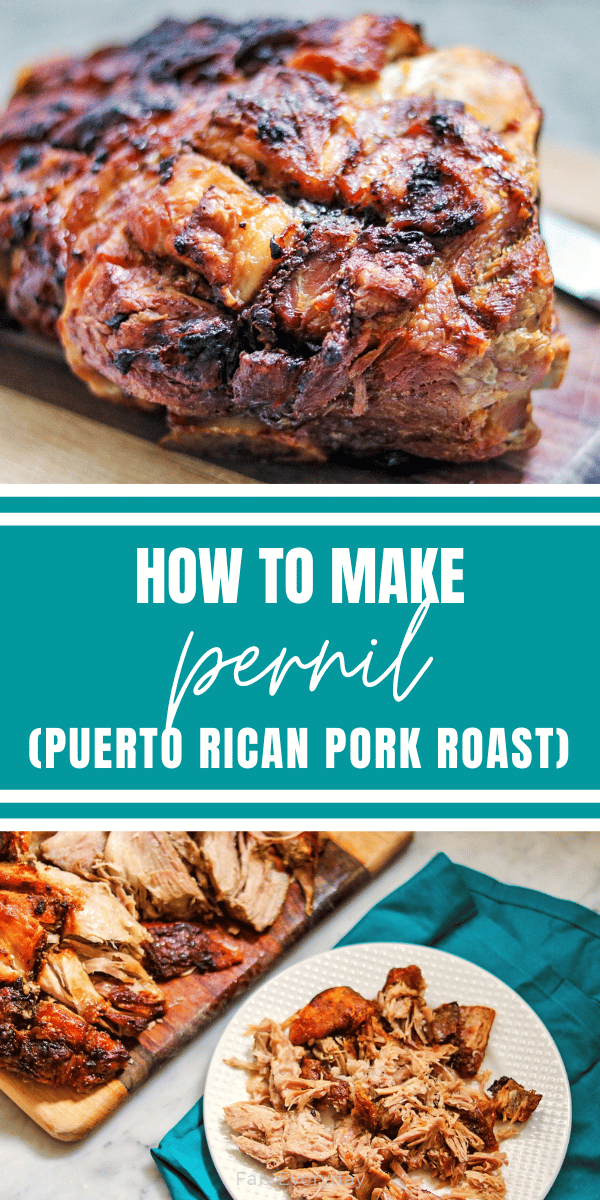
Serve this Puerto Rican pernil with:
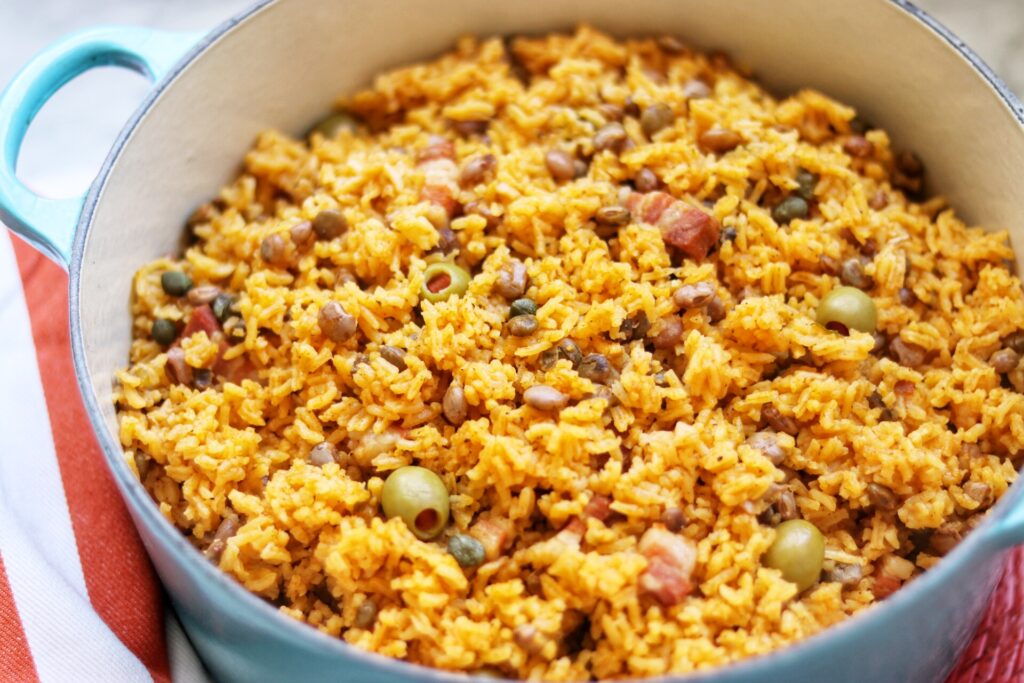
What you need to make Puerto Rican pork shoulder
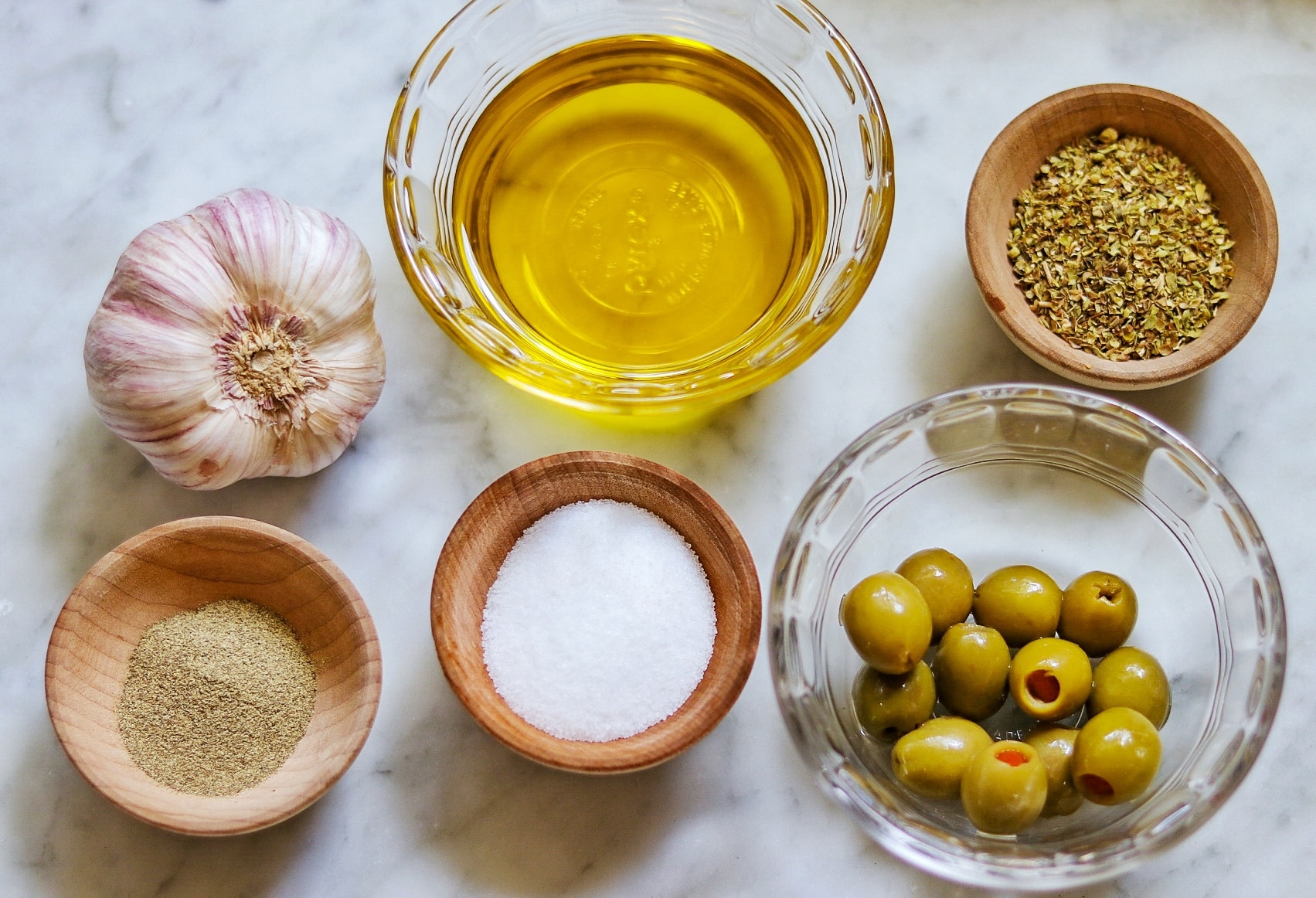
Here are the ingredients and tools you’ll need to gather to make this Puerto Rican pork roast:
- 1/2 cup olive oil, divided
- 9 cloves garlic
- 1 tablespoon salt
- 1 tablespoon dried oregano
- 1 1/2 teaspoons black pepper
- 1 dozen pimiento stuffed Spanish olives, finely minced
- Bone-in pork shoulder or butt roast with skin
- Large mortar and pestle (or pilon)
- Large knife
- Roasting pan with rack
How to make Puerto Rican pork roast
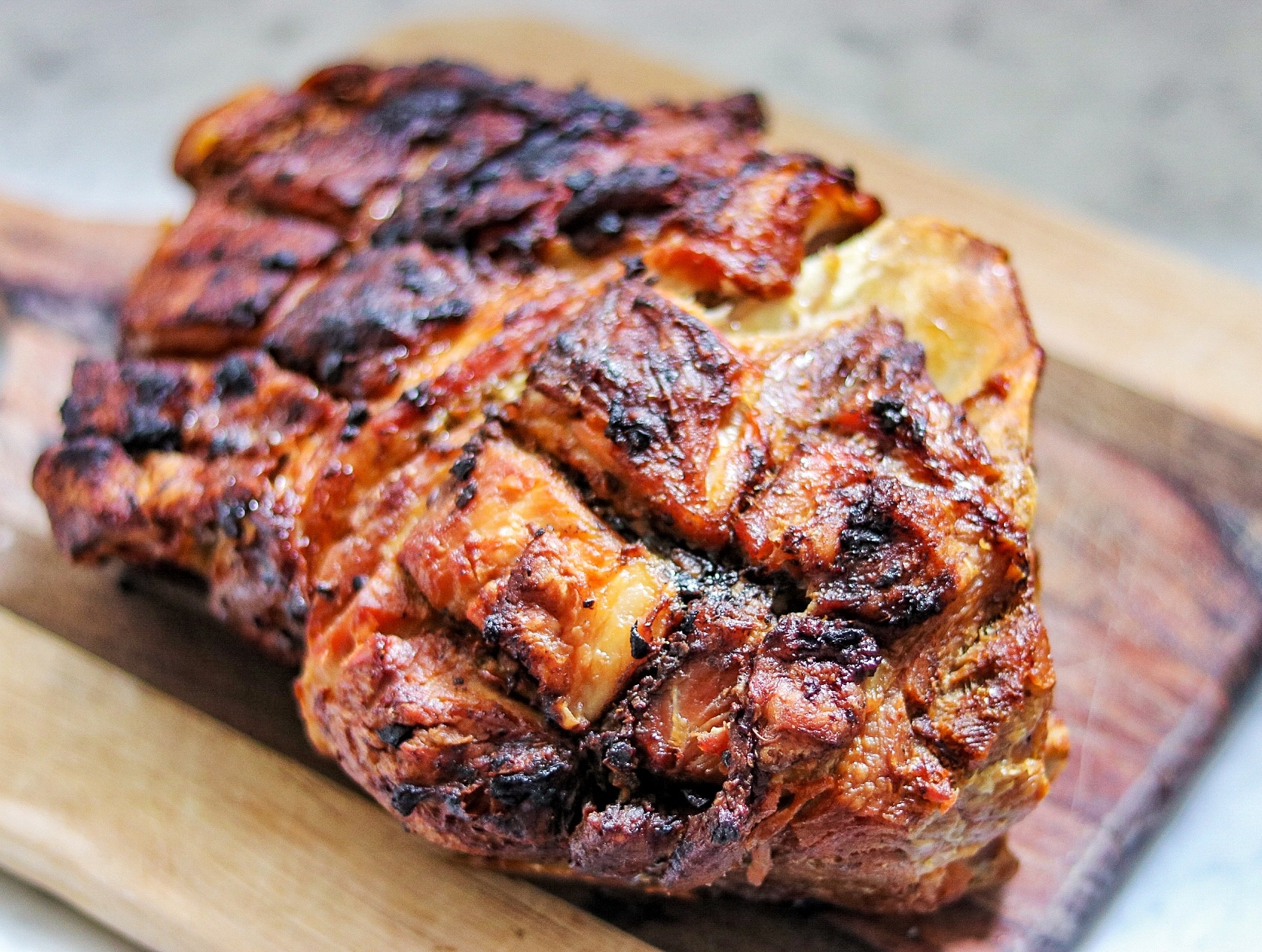
The first step in this Puerto Rican pernil recipe is to create the stuffing and rub.
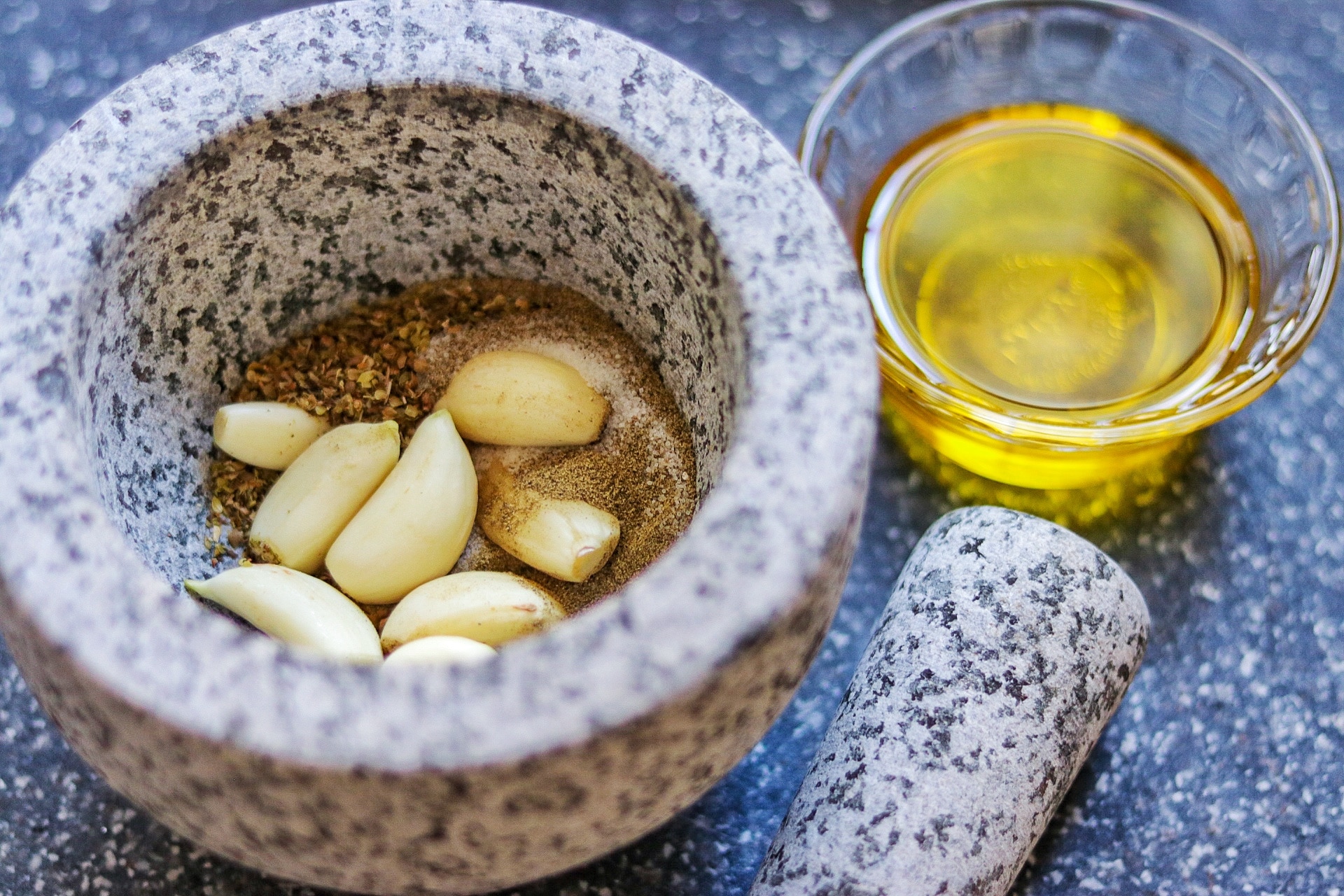
In a large mortar (or pilon), add half the olive oil with the garlic cloves, salt, oregano, and pepper.
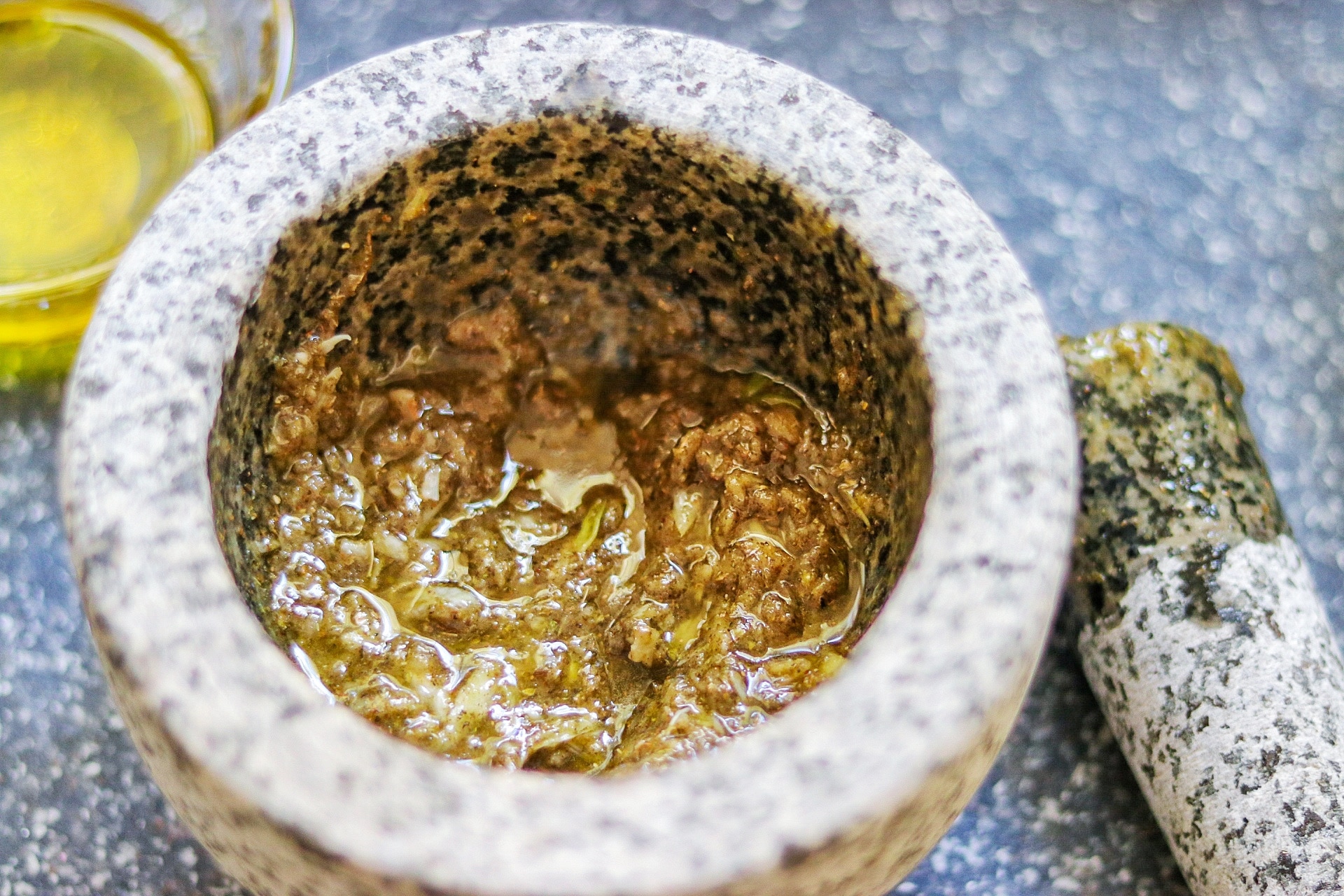
Grind with a pestle until the garlic is pulverized and the ingredients are well incorporated.
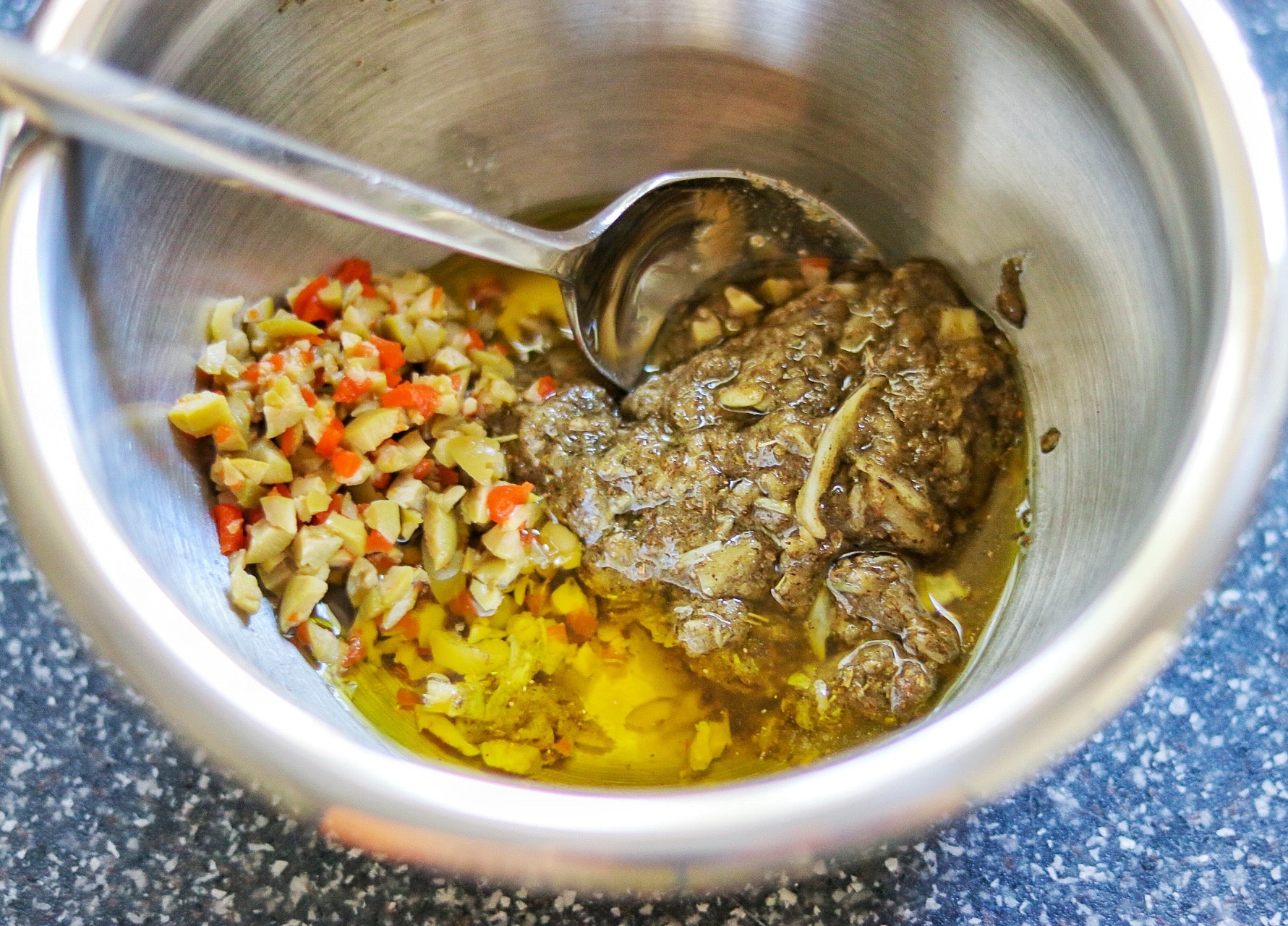
Place this garlic mixture into a bowl with the remaining olive oil and minced olives.
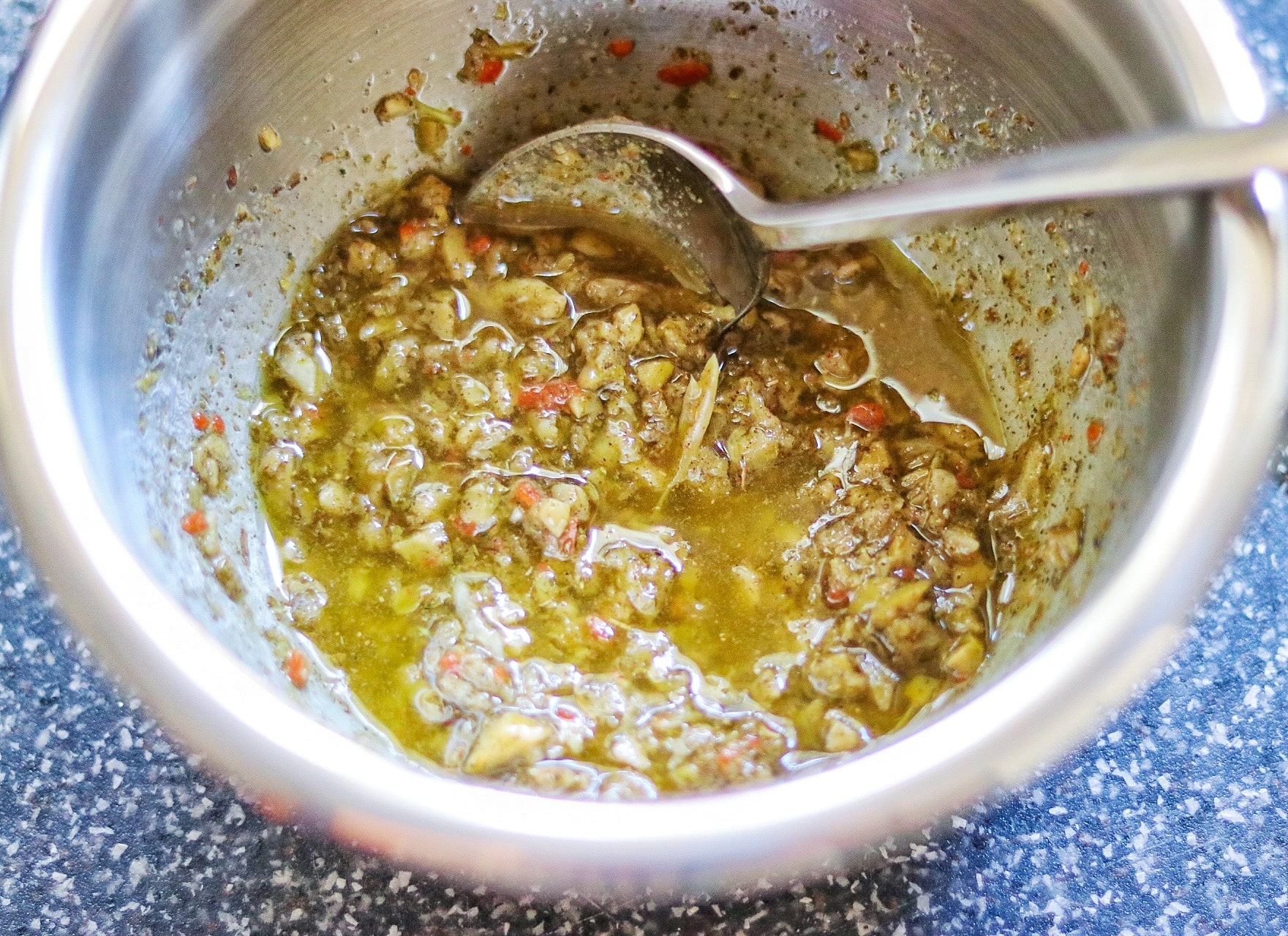
Stir until well mixed.
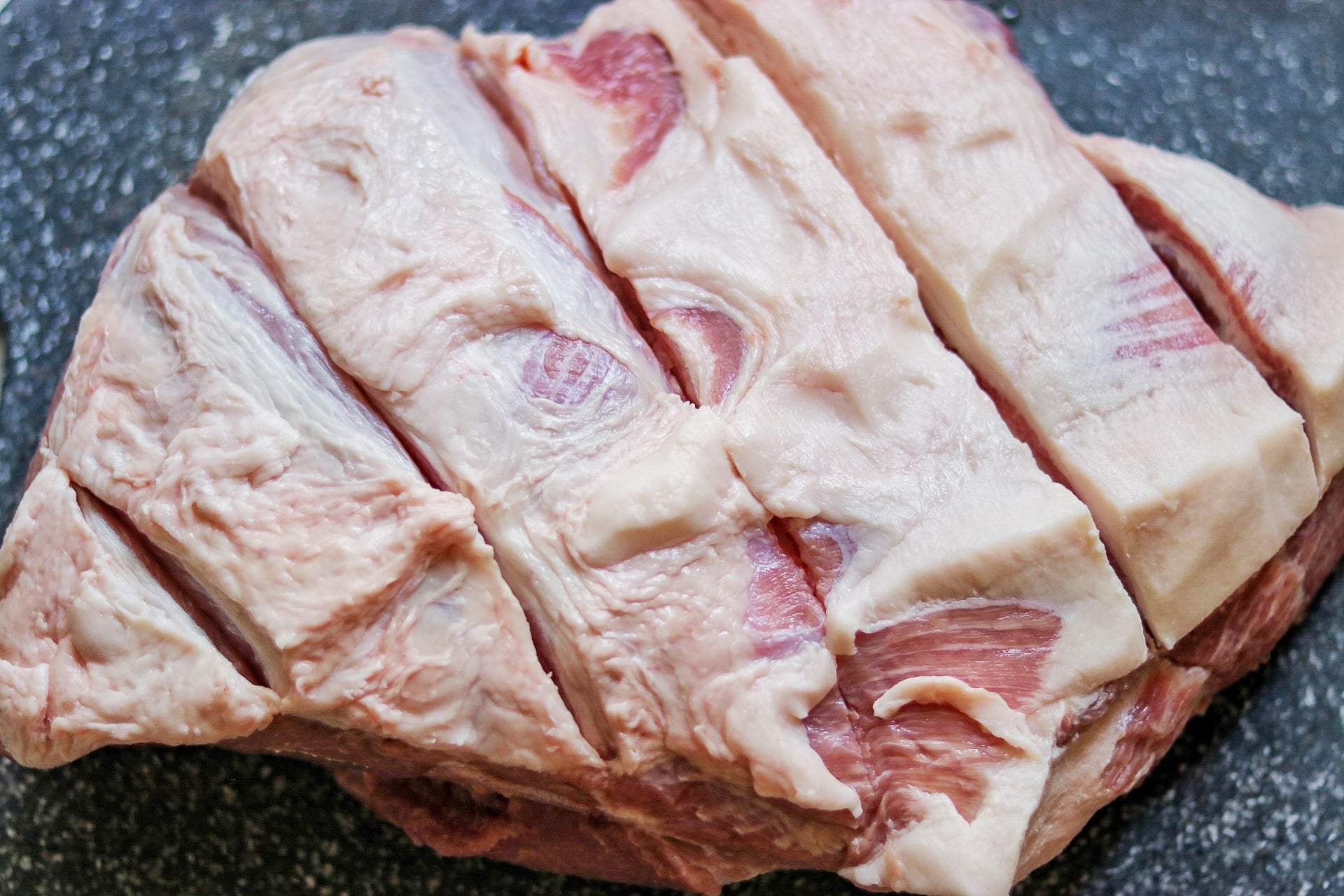
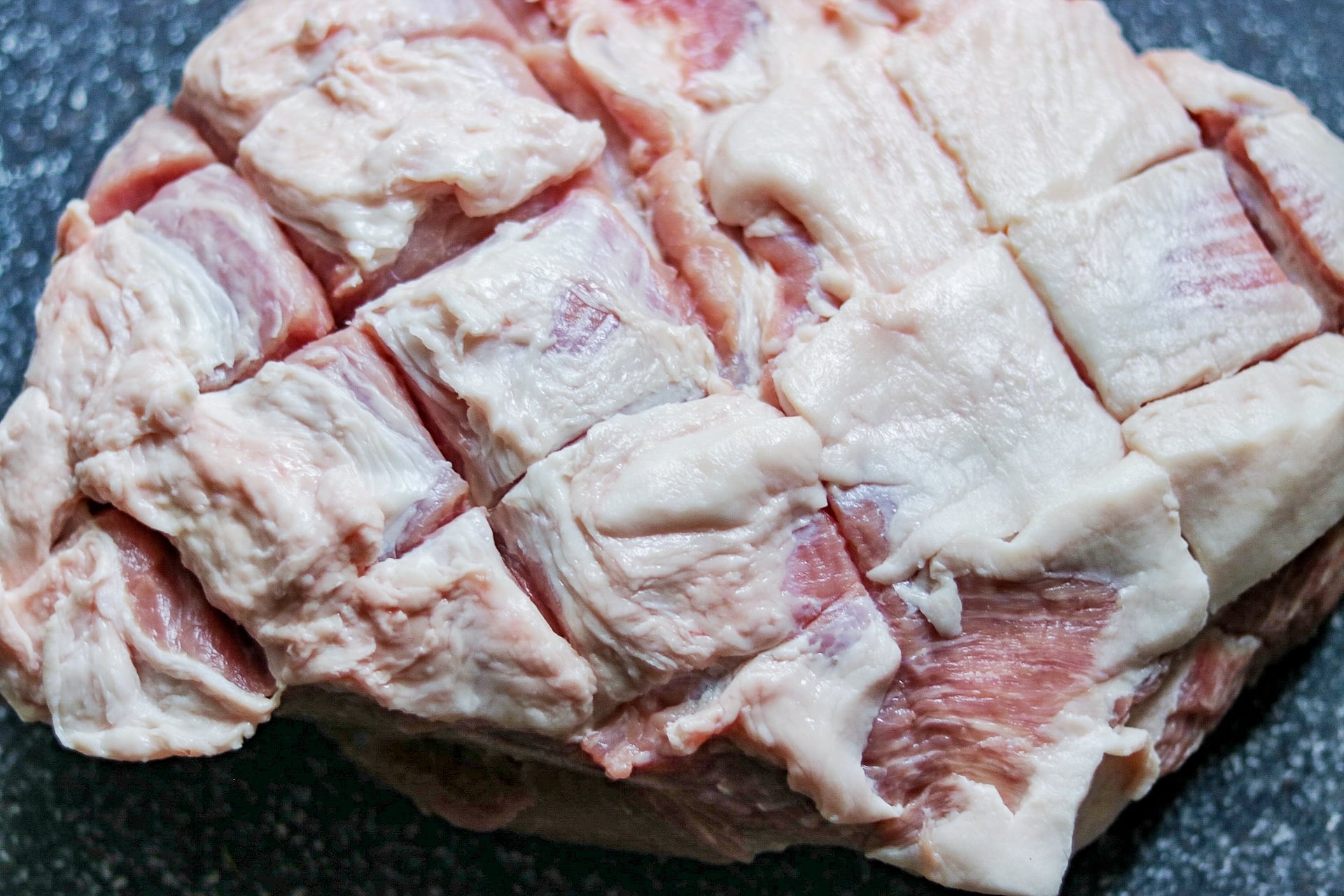
To prepare the the pork for this pernil recipe, rinse the pork with cold water and pat dry. Deeply score the skin of the pork shoulder with a sharp knife to form approximately 2-inch squares.
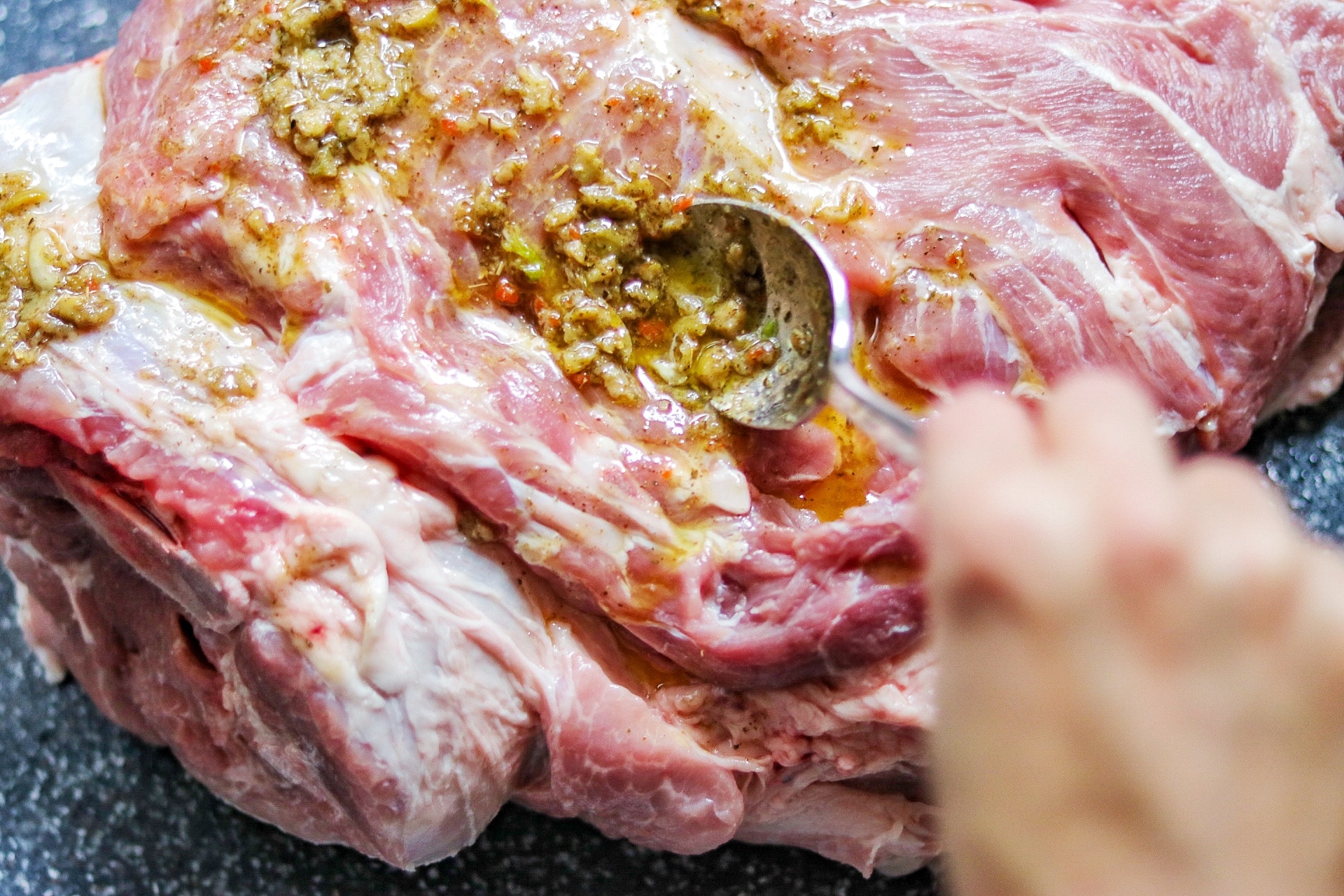
On the non-skin sides of the pork, pierce the meat as deeply as possible using a 1-inch wide knife. Stuff the holes created by the knife with the garlic and olive mixture, making sure that each hole has bits of all the pieces of the mix.

Rub the remainder of the mix all around the shoulder, getting between the scores on the skin. Cover the Puerto Rican pork shoulder with foil and refrigerate overnight.
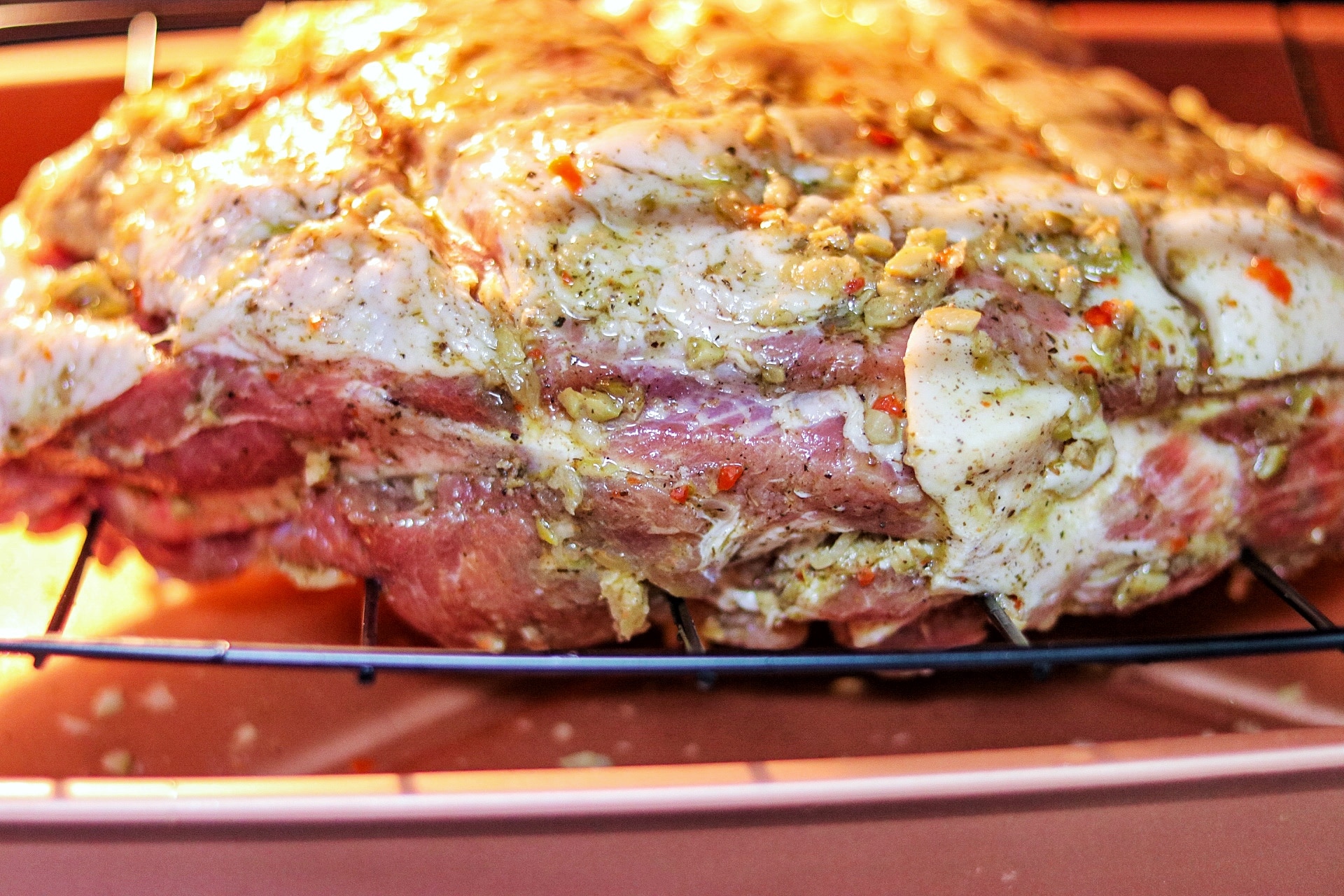
The roasting process for this and other pernil recipes is a lengthy one (as pernil is a slow roasted Puerto Rican pork shoulder). The roast is cooked in 1-hour phases, adjusting the temperature between each phase. My father’s pernil recipe method is a “hot and high then low and slow” roasting method that yields super moist meat with a crispy skin (pernil recipe crispy skin is very desirable!). When ready to cook your Puerto Rican pork roast, preheat the oven to 450° F. Place the roast, skin-side up on a rack in a roasting pan. Pour water in the bottom of the pan (enough to easily cover the bottom of the pan without touching the pork). You’re going to keep adding water to the roasting pan throughout the roasting process so that it never dries or evaporates completely. The drippings in the pan can be used for making a delicious gravy! Place the roasting pan in the center of the oven, uncovered. Cook for 1 hour.
Hour 2: Lower the heat to 375° F and cook for 1 hour (checking the water level).
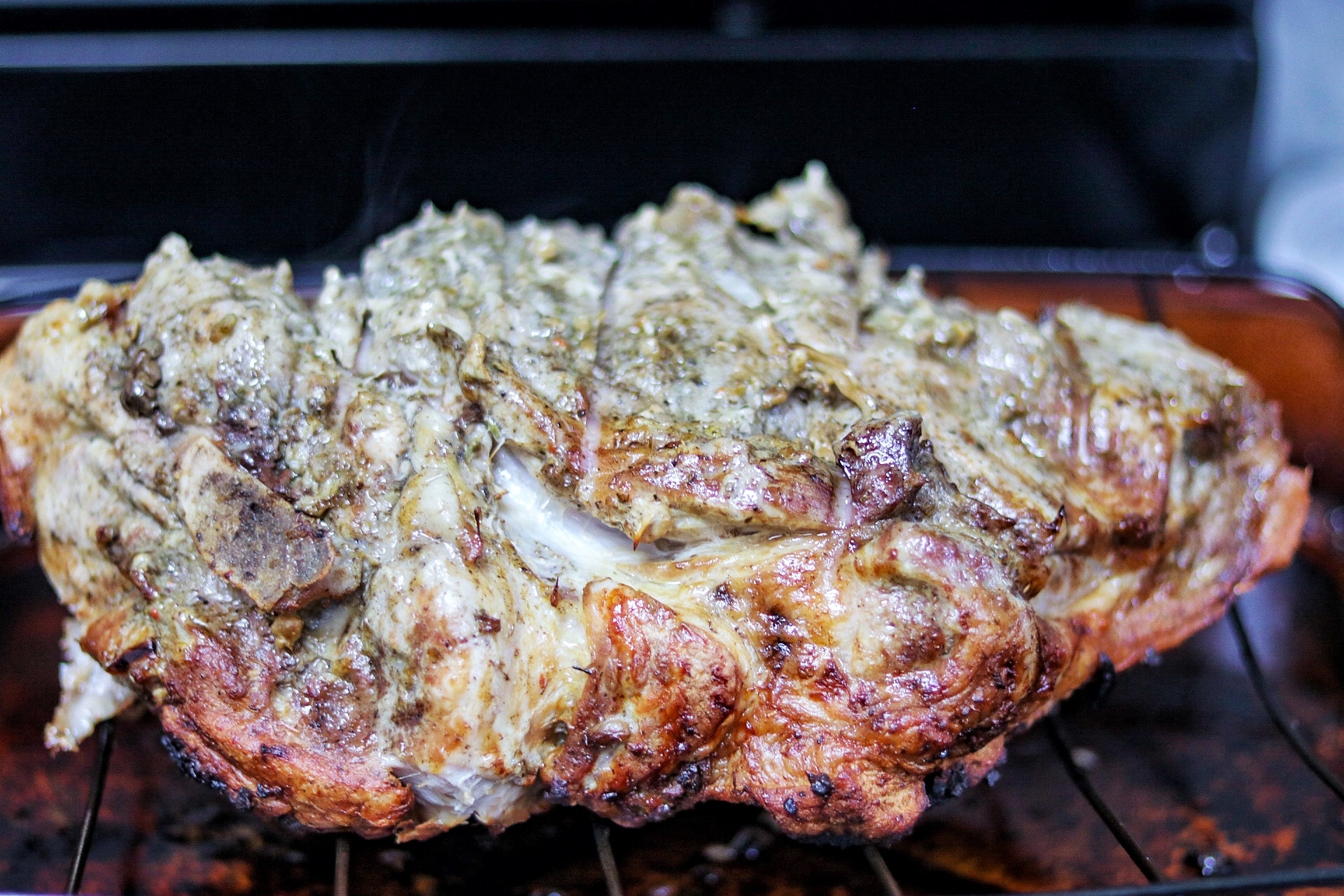
Hour 3: Rotate the Puerto Rican pork shoulder to skin-side down, and lower the heat to 350° F and cook for 1 hour.
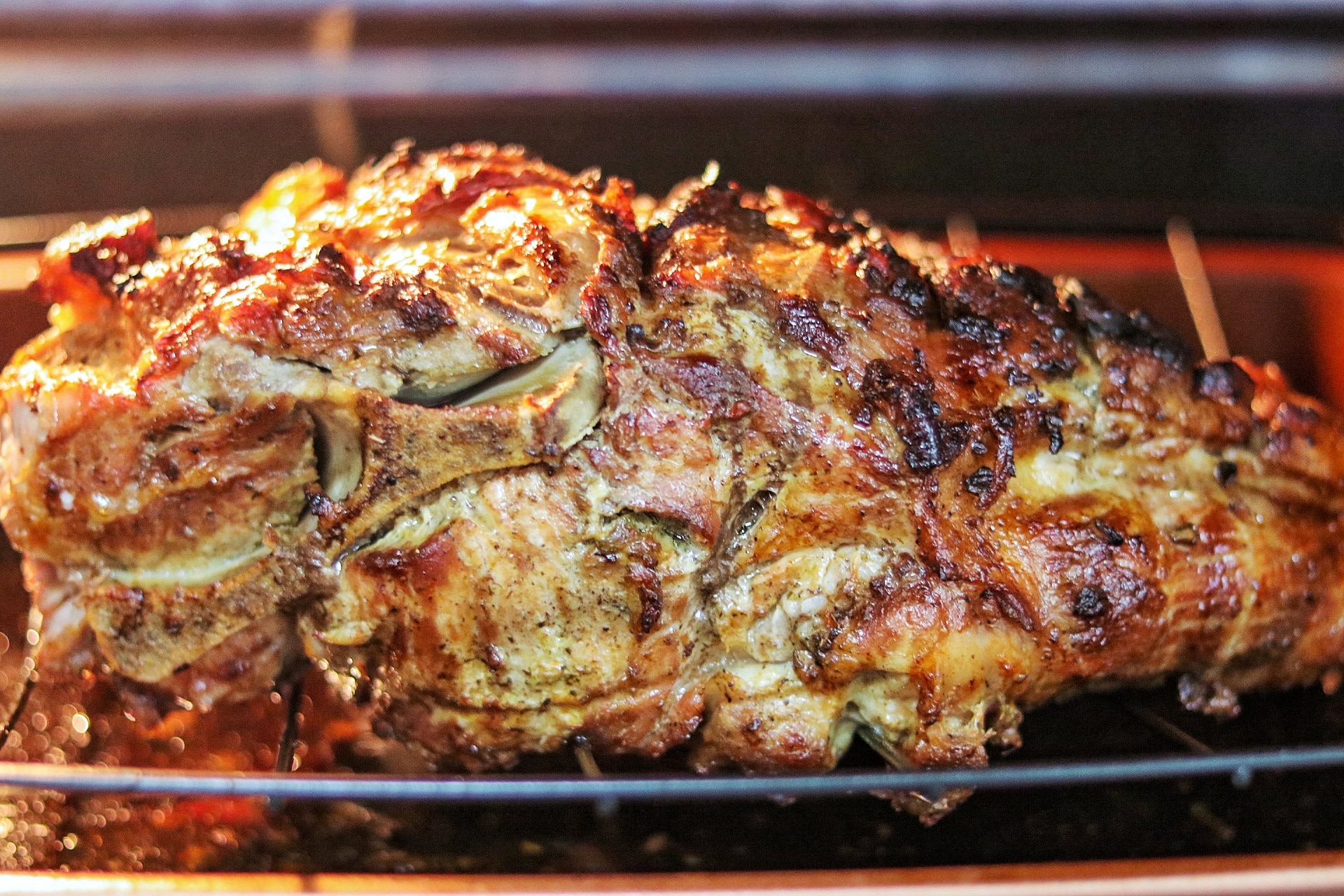
Hours 4+: Lower the heat to 325° F, turn the Puerto Rican pork roast back to skin-side up and cook for the remainder of the time, while checking every 30 minutes to 1 hour (depending on the size and thickness of your roast). You’ll roast the pork for a minimum of 35 minutes for each pound (total cooking time from the beginning of the roasting process). The pork should read at least 165°F on an internal thermometer at the thickest part AND shred easily with a fork (note that you might reach the “done” temp sooner, but you might not be to that great shreddy consistency yet). The bone will also feel like it can easily release from the meat, and the skin will be nice and crispy. For a 9-pound roast, it takes me an average of 5 total hours of roasting time (2 hours at this lowest heat level).

Remove the Puerto Rican pernil roast to a cutting board and cover with foil. Let rest for 20 minutes before removing the foil and carving. Optional: Before carving you can peel off the crispy squares of skin (called “cueritos”) from the roast and eat them. This is something my family loves to do while we wait for everything to be served.
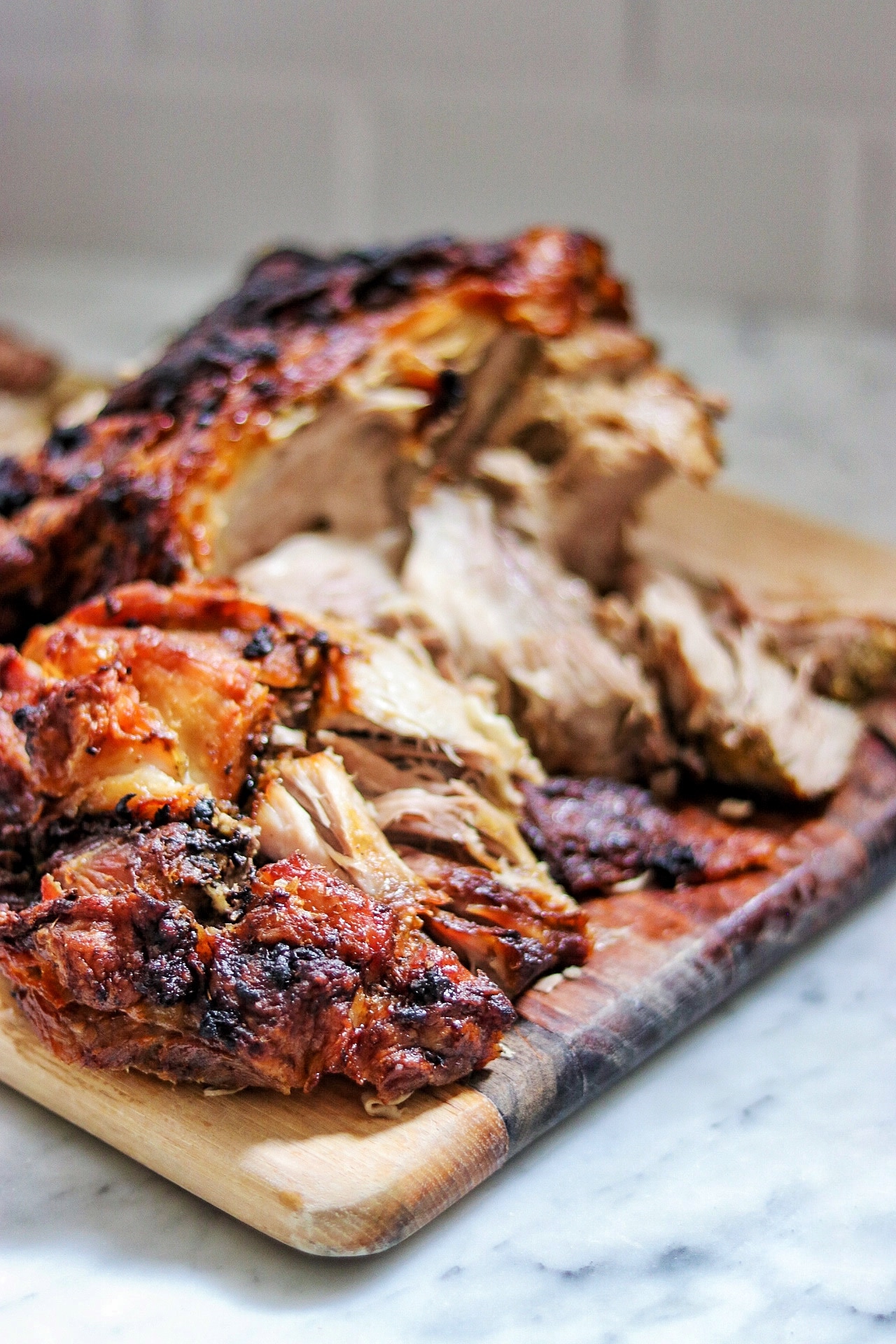

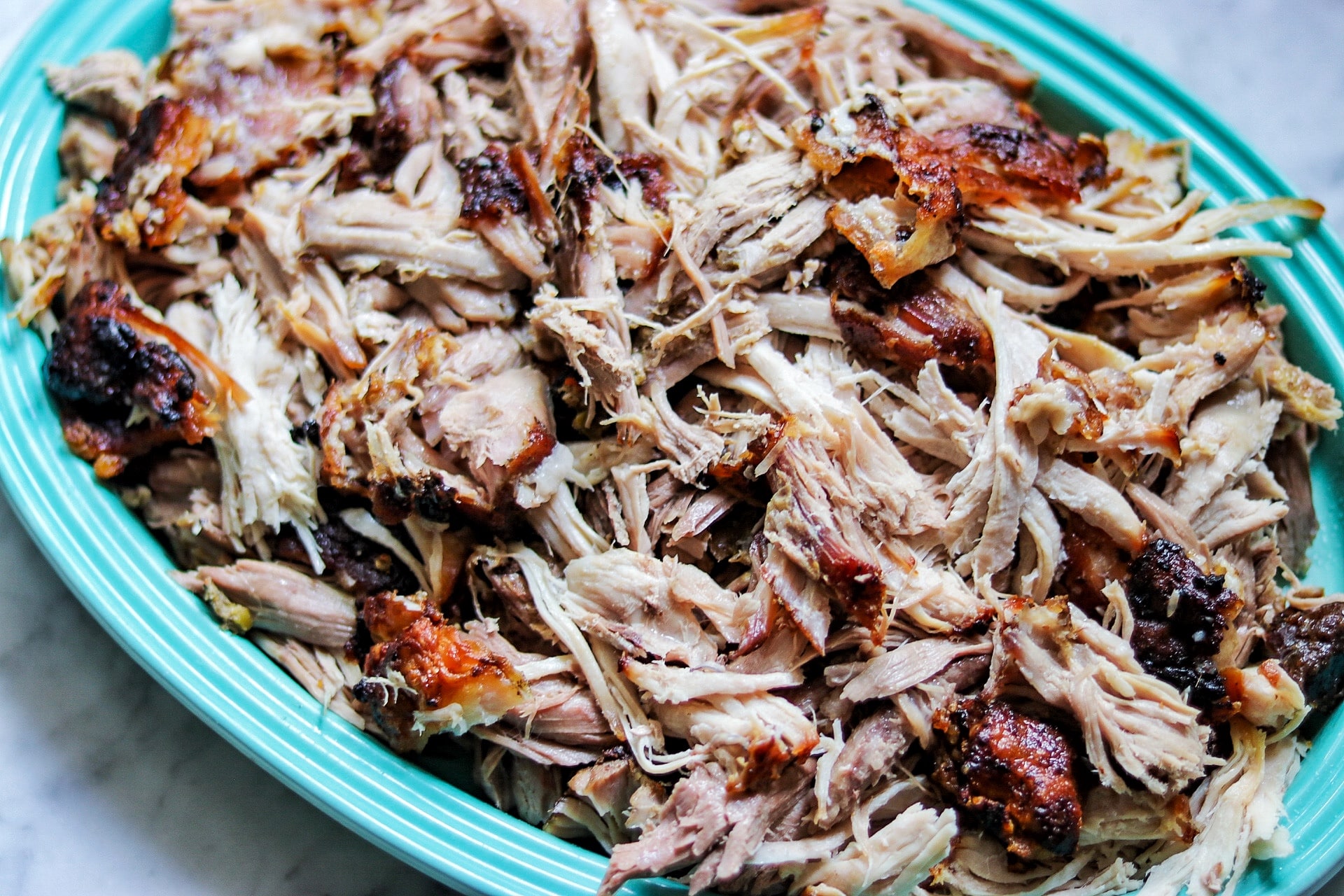
Here’s the pernil recipe! I hope the memories and the meal are equally good when you make this Puerto Rican pork roast for your loved ones. Buen provecho!
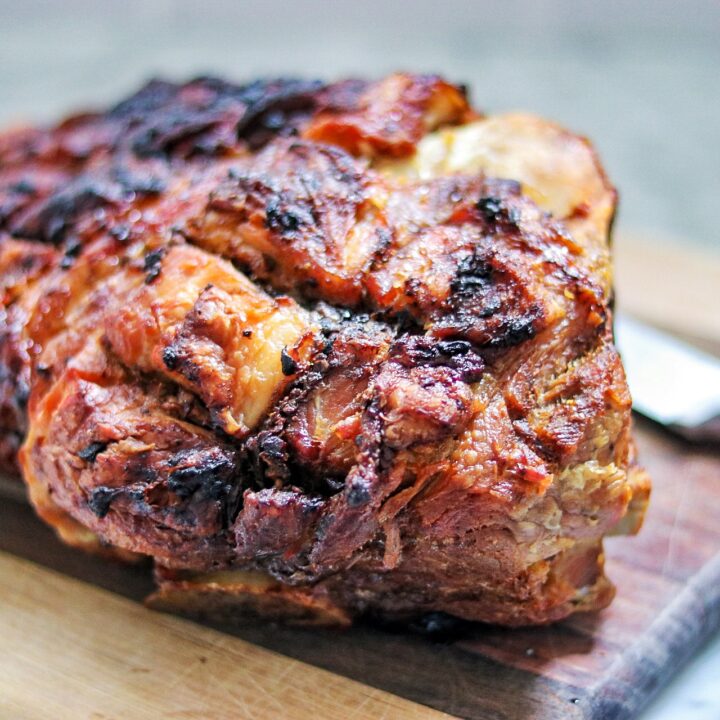
Pernil (Puerto Rican Pork Roast)
Pernil is a Puerto Rican pork roast that's especially popular at Christmas. My father makes this for every holiday and special occasion, and we all help him make it and look forward to eating it. This year I'm finally getting our Puerto Rican pernil recipe up on Fab Everyday. Today I am pleased to share my father's Puerto Rican roast pork recipe and cooking method (it makes a delicious pernil recipe crispy skin). As with any recipes like this, every family has their own way of making pernil, so feel free to tweak the seasonings for this Puerto Rican pork shoulder to your liking.
Ingredients
- 1/2 cup olive oil, divided
- 9 cloves garlic
- 1 tablespoon salt
- 1 tablespoon dried oregano
- 1 1/2 teaspoons black pepper
- 1 dozen pimiento stuffed Spanish olives, finely minced
- Bone-in pork shoulder or butt roast
Instructions
- In a large mortar (or pilon), add half the olive oil with the garlic, salt, oregano, and pepper. Grind with a pestle until the garlic is pulverized and the ingredients are well incorporated. Place this garlic mixture into a bowl with the remaining olive oil and minced olives and stir until well mixed.
- Rinse the pork with cold water and pat dry. Deeply score the skin of the shoulder with a sharp knife to form approximately 2-inch squares. On the non-skin sides of the pork, pierce the meat as deeply as possible using a 1-inch wide knife.
- Stuff the holes created by the knife with the garlic and olive mixture, making sure that each hole has bits of all the pieces of the mix. Rub the remainder of the mix all around the shoulder, getting between the scores on the skin.
- Cover with foil and refrigerate overnight.
- When ready to roast, preheat the oven to 450° F.
- Place the roast, skin-side up on a rack in a roasting pan. Pour water in the bottom of the pan (enough to easily cover the bottom of the pan without touching the pork). You're going to keep adding water to the roasting pan throughout the roasting process so that it never dries or evaporates completely (the drippings in the pan can be used for making gravy). Place the roasting pan in the center of the oven, uncovered. Cook for 1 hour.
- Lower the heat to 375° F and cook for 1 hour (checking the water level).
- Rotate the roast to skin-side down, and lower the heat to 350° F and cook for 1 hour.
- Lower the heat to 325° F, turn the shoulder back to skin-side up and cook for the remainder of the time, while checking every 30 minutes to 1 hour (depending on the size and thickness of your roast). You'll roast the pork for a minimum of 35 minutes for each pound. The pork should read at least 165°F on an internal thermometer at the thickest part and shred easily with a fork. The bone will also feel like it can easily release from the meat. For a 9-pound roast, it takes me an average of 5 total hours of roasting time (2 hours at this lowest heat level).
- Remove the roast to a cutting board and cover with foil. Let rest for 20 minutes before removing the foil and carving.
- Optional: Before carving you can peel off the crispy squares of skin (called cueritos) from the roast and eat them. This is something my family loves to do while we wait for everything to be served.
Notes
Serve this Puerto Rican pork roast with:
Recommended Products
As an Amazon Associate and member of other affiliate programs, I earn from qualifying purchases.
More Puerto Rican recipes like this pernil recipe
- How to Make Homemade Puerto Rican Sofrito
- Air Fryer Tostones (Fried Green Plantain Chips)
- Pinchos de Pollo (Grilled Puerto Rican Chicken Skewers)
- Shortcut Puerto Rican-Style Picadillo Empanadas (Empanadillas) recipe
- Easy Puerto Rican-Style Vegetarian Empanada Recipe
- Arroz con Gandules (Rice with Pigeon Peas)
- Instant Pot Puerto Rican Arroz con Pollo
- Habichuelas Guisadas (Puerto Rican-Style Beans)
- Instant Pot Estofado de Pollo (or Pollo Guisado, Puerto Rican-Style Chicken Stew) Recipe
- Instant Pot Asopao de Pollo (Puerto Rican-Style Chicken and Rice Stew
- Instant Pot Arroz con Dulce (Puerto Rican-Style Rice Pudding)
- Papa Cruz’s Flan de Coco (Puerto Rican Coconut Flan Recipe)
- Instant Pot Coconut Flan Recipe (Flan de Coco)
- Flan de Chocolate (Chocolate Flan Recipe)
- Coquito Balls (Caribbean-Style Coconut Rum Balls)
- The Best Coquito (Puerto Rican Eggnog) Recipe


Leave a Reply